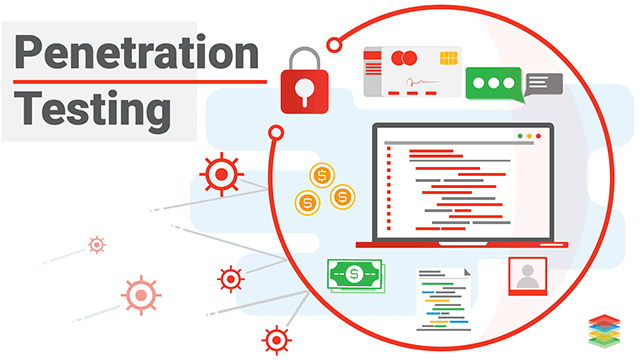To better understand the need of penetration testing, we must first get acquainted with its precise definition, rules of interaction, comparison, why and other things.

What is the Penetration?
A penetration test, also known as a pentest, is an ethically motivated endeavor to evaluate and test the security measures in place to safeguard an organization's assets and data. Similar to an audit, a penetration test entails employing the same tools, tactics, and methodology that someone with malicious intent would use. Penetration testing is only one aspect of the ongoing debate about legality and ethics in cybersecurity. Particularly in pop culture, terms like "hacking" and "hacker" frequently have negative connotations as a result of a few bad apples. Understanding the concept of legally accessing a computer system can be difficult because it is unclear what really qualifies as legal. Remember that a penetration test is an authorized examination of a computer system's security and defenses as agreed upon by the system owners. This makes it fairly obvious that penetration is legal; anything that violates this agreement is regarded as illegal. A formal dialogue between the penetration tester and the system owner takes place before a penetration test begins. There is consensus on a number of testing tools, methods, and systems. The direction the penetration test will go will be decided during this discussion, which establishes the scope of the penetration testing agreement.
Rules of Engagement (ROE)
At the start of a penetration testing engagement, a document called the ROE is made. This agreement is divided into three primary elements, each of which is outlined in the table below. These sections ultimately determine how the engagement will be carried out.
| Section | Description |
|---|---|
| Permission | This section of the document gives explicit permission for the engagement to be carried out. This permission is essential to legally protect individuals and organizations for the activities they carry out. |
| Test Scope | This section of the document will annotate specific targets to which the engagement should apply. For example, the penetration test may only apply to certain servers or applications but not the entire network. |
| Rules | The rules section will define exactly the techniques that are permitted during the engagement. For example, the rules may specifically state that techniques such as phishing attacks are prohibited, but MITM (Man-in-the-Middle) attacks are okay. |
The difference between penetration testing and vulnerability assessment
Many people confuse vulnerability assessment with penetration testing. Vulnerability assessment is actually a process during which the vulnerabilities of your system are discovered through automated tools with minimal human intervention. These tools usually list system vulnerabilities based on CVE IDs and show you a report at the end. It is true that vulnerability assessment tools provide a picture of the system's weaknesses, but they will not provide you with a true understanding of these vulnerabilities. Penetration testing is done with the approach of whether system vulnerabilities can be used to gain access to the organization. As a result, they will provide you with useful and valuable information.
Why do we need penetration testing?
Penetration testing shows where and how an attacker might break into your organization's network. Knowing this allows you to identify and fix system weaknesses before an actual attack occurs. According to recent research by Positive Technologies, almost all organizations in the world have weaknesses that attackers can exploit. According to this research, in 93% of cases, the penetration testing teams were able to exploit the weak points of the system and infiltrate the organization's network. The average time required for infiltration is estimated to be four days. Also, in 71% of organizations, an unskilled hacker could penetrate the organization's internal network. Your organization will definitely not be exempt from this statistic.
What possibilities does a successful penetration test give you?
- Identifying and prioritizing the organization's risks
- Measuring the effectiveness of existing security solutions
- Ensuring the correctness of the organization's security strategy
- Benefit from a proactive security approach
- Implementation of security standards and requirements
- Intelligent vulnerability management
When should this test be done?
You should regularly perform penetration testing to ensure the integrity of the IT infrastructure security. Conducting regular security assessments at regular intervals will show you how your organization's assets may be vulnerable to new cyber threats. In addition, it is generally recommended to implement a penetration testing program in your organization in the following cases:
- When adding a new service or application to the organization
- When making changes to the organization's network infrastructure or security policies
- When changing the location of the organization or sub-branches
Types of penetration testing
Penetration tests differ both in approach and in terms of the vulnerabilities that are exploited. The level of information provided to penetration specialists determines the scope of the project. For example, does the implementation team know about your organization's network architecture or do they have to discover this information themselves? There are three general approaches to performing penetration testing:
- Having some information - Gray Box Penetration Testing
- With minimal information - Black Box Penetration Testing
- Having the most information - White Box Penetration Testing
Implementation of web application penetration testing
Statistics show that many organizations that have been victims of cyber-attacks used vulnerable web applications. Many organizations think that vulnerability scanning is enough to find security problems in a web application. Vulnerability scanning reveals an application's weak points, but only penetration testing shows how resistant the application is to real attacks.

